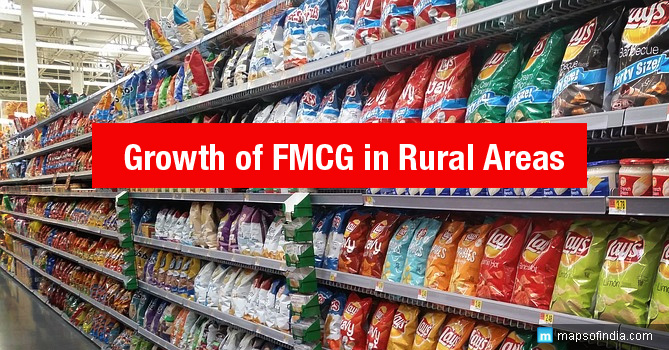It’s a matter of great pride for India’s FMCG (fast-moving consumer goods) sector as for the first time in two years, FMCG consumption growth in rural India was in 2 digits. What is most surprising is that rural India’s growth was more than the rate of expansion in urban cities.
Reasons behind Consumption Increase in Rural India
One prime cause for increase in FMCG consumption in Rural India is due to higher agricultural income because of good monsoon rains last year and expectation of normal rains this year too. Good monsoons mean good agricultural output, which in turn means higher farm income for the rural farmers and villagers whose main source of income is agriculture. This has led to more demand in FMCG products by rural India. The monsoons were poor earlier in two consecutive years, 2013 and 2014. which had impacted the rural demand. The input costs have come down in the last couple of months and according to experts, there are not much chances of price increase in FMCG sector over the next 12 months.
Demand for consumer goods, especially for the rural people depend on the farm output and the income generated out of it. Buying behavior depends on the farm produce. Therefore, annual monsoon rains play an important role in shaping purchasing patterns in India, which is Asia’s third-biggest economy, and is home to more than 800 million rural people. On the other hand, bad monsoons mean bad harvest which means bad income leading to stagnant sales growth.
Urban and Rural Area Consumption Comparison
During the quarter-ended March 2017, the growth of rural demand in FMCH was 5%. However, the total sales by volume in rural areas or the actual number of goods sold in the rural areas increased at 11% during the period April to June 2017. This is the highest growth rate since mid 2015. During the same period, the urban market showed a growth of 7% only. This report is as per the latest data released by Kantar Worldpanel, the consumer insights arm of WPP.
It is the rural demand which has helped in improving the overall growth of FMCG sector in the country. At present, rural consumer markets have accounted for more than a one-third of all consumer goods sold.
Can this growth momentum be sustained?
The big question whether this growth momentum can be sustained or not.
India’s rural people rely heavily on wholesalers for stocking up their essentials like as cookies, oils, or toothpastes and other consumer items. These are supplied by suppliers to the small retail outlets in far-flung villages. But with GST implementation, there are many retail shops in the rural areas which have not yet registered with the GST (Goods and Services Tax) network. Another fact which can derail this positive growth story is the low prices of cash crops, combined with disruption in supply chain.
It has been seen that over the past 2-3 years, consumption in rural India is growing at a rate twice more than the urban growth rate. No doubt, with GST implementation, the process of restocking in retail shops in rural areas has been slower as it will take time for wholesalers to adapt to the new GST transitions. But, the situation will soon stabilize by July-end.
Experts said that changes in product pricing after GST could have impacted rural growth in a negative way. But, so far, it has been seen that business is running usual at rural markets.
To sum up
While the urban markets constitute major share of total revenues in FMCG, the rural markets are steadily increasing. There is a lot of scope for growth in FMCG from rural markets and this is evident from this year’s data. There will be more penetration of brands in the consumer market in rural India. The FMCG sector has grown at an annual average of about 11% in the last 10 years in India. The rural FMCG market is anticipated to increase at a CAGR of 17.7% to reach US$ 100 billion by 2020.
It has been seen that while there has been a steady urban growth over the years, the good news is that rural growth in demand for FMCG has been faster than urban growth. The present trend seems to be a positive one and the impact of a good monsoon should lead to an even stronger growth in the second half of the year.




